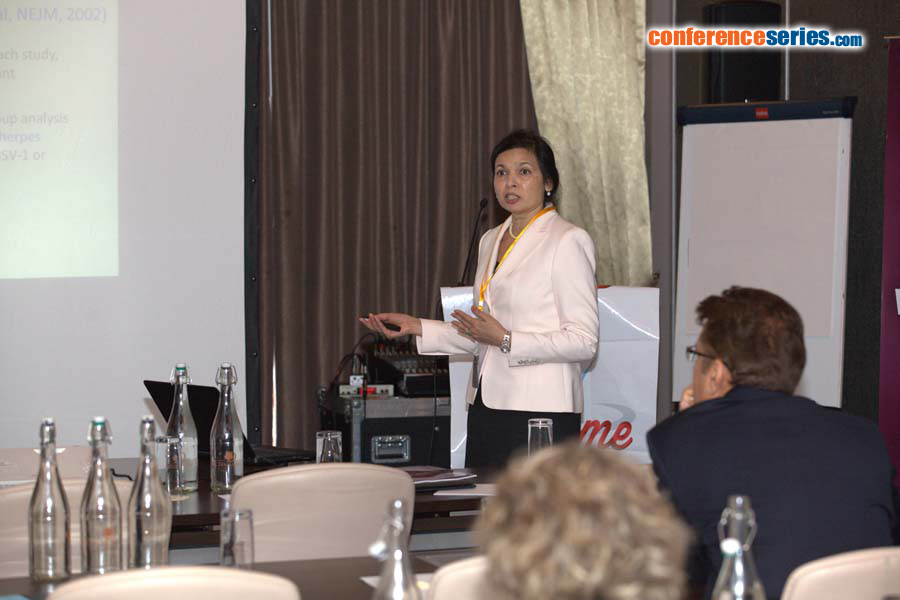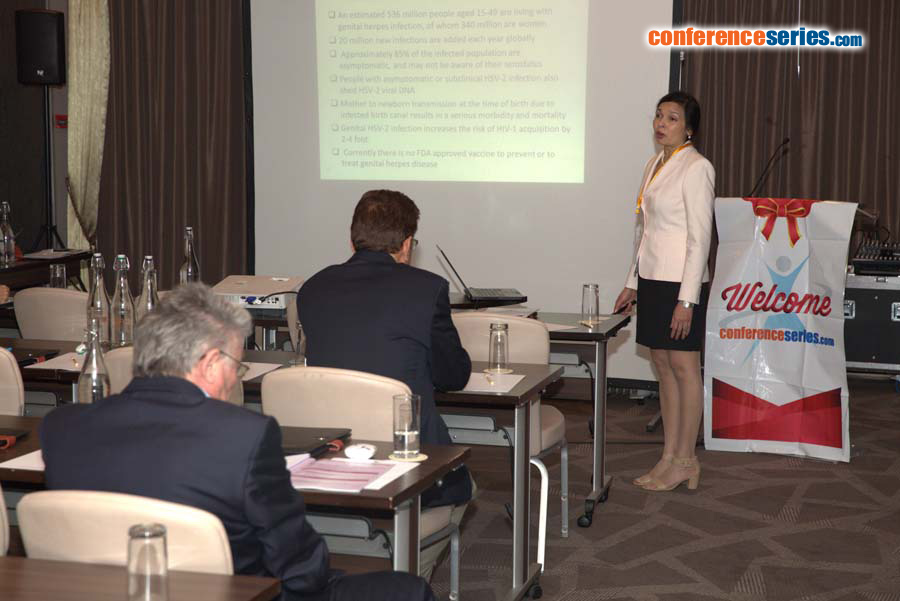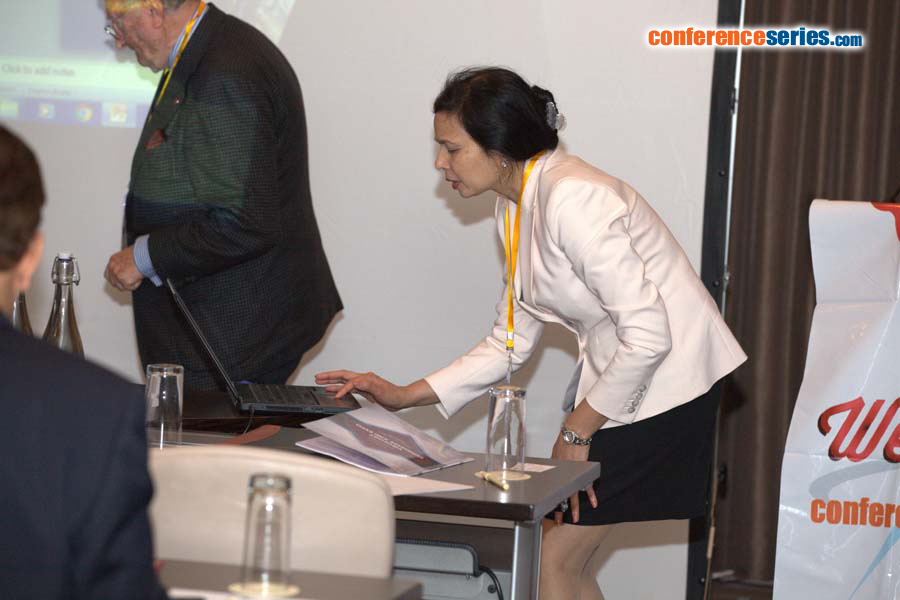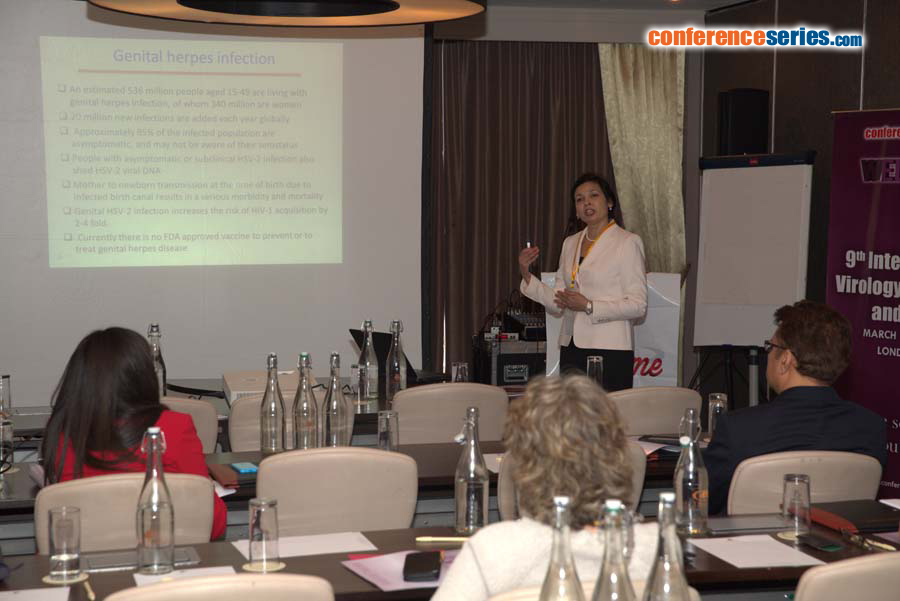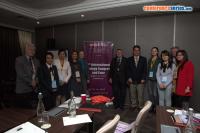
Sita Awasthi
University of Pennsylvania, USA
Title: A trivalent protein subunit vaccine for the treatment of Genital Herpes disease and subclinical infection in a pre-clinical model
Biography
Biography: Sita Awasthi
Abstract
There are approximately half a billion people infected with herpes simplex virus type 2 (HSV-2) worldwide. Genital herpes infection increases the risk of HIV acquisition and transmission by 3- to 4-fold. A successful genital herpes vaccine will help curb two overlapping epidemics. We have designed a protein subunit-based therapeutic vaccine that will treat individuals already infected with HSV-2. The goals of a therapeutic vaccine are to reduce recurrent genital lesions (disease) and subclinical infection, as measured by genital shedding of HSV-2 DNA and infectious virus. Subclinical infection is an important target as it accounts for much of the sexual transmission of genital herpes. We evaluated a trivalent subunit antigen vaccine consisting of HSV-2 glycoproteins C, D and E (gC2, gD2, gE2) with the intent of blocking virus entry mediated by gD2; blocking virus attachment to cells, and inhibiting innate immunity mediated by complement by gC2; and blocking cell-to-cell spread and immune evasion from antibody mediated by gE2. We administered gC2/gD2/gE2 with CpG, a TLR9 agonist that enhances CD8 T cell responses, and alum, to stimulate antibody production. The vaccine was administered 3 times at two-week intervals to guinea pigs that were previously infected intravaginally with HSV-2. The vaccine significantly boosted gC2, gD2 and gE2 antibody levels as well as enhanced neutralizing antibody titers. The mock-immunized animals had recurrences on 48 of 624 days (7.7%) compared with 29 on 738 days (3.9%) in the trivalent group, which represents 49% fewer recurrent lesion days. The impact of the vaccine was apparent from the time of the first immunization. In addition, a significant reduction in vaginal shedding of HSV-2 DNA 52% (P=0.039) was noted compared to mock vaccinated animals, which did not become apparent until the third immunization. We evaluated the recovery of infectious virus from vaginal swabs following the third immunization, as we consider infectious virus a relevant marker for risk of transmission. Infectious virus was isolated on 5/26 (19.2%) days when mock-immunized animals were shedding HSV-2 DNA compared with 1/11 (9.1%) days when the trivalent-immunized animals were shedding HSV-2 DNA. Although this difference was not statistically significant, the results raise the interesting possibility that immunized animals are less likely to infect sexual partners even when shedding HSV-2 DNA. We conclude that therapeutic immunization reduces the number of days animals have genital lesions and genital shedding of HSV-2 DNA, and that on days with vaginal shedding of HSV-2 DNA, immunized animals are less likely to be shedding infectious virus compared to mock-immunized animals.


